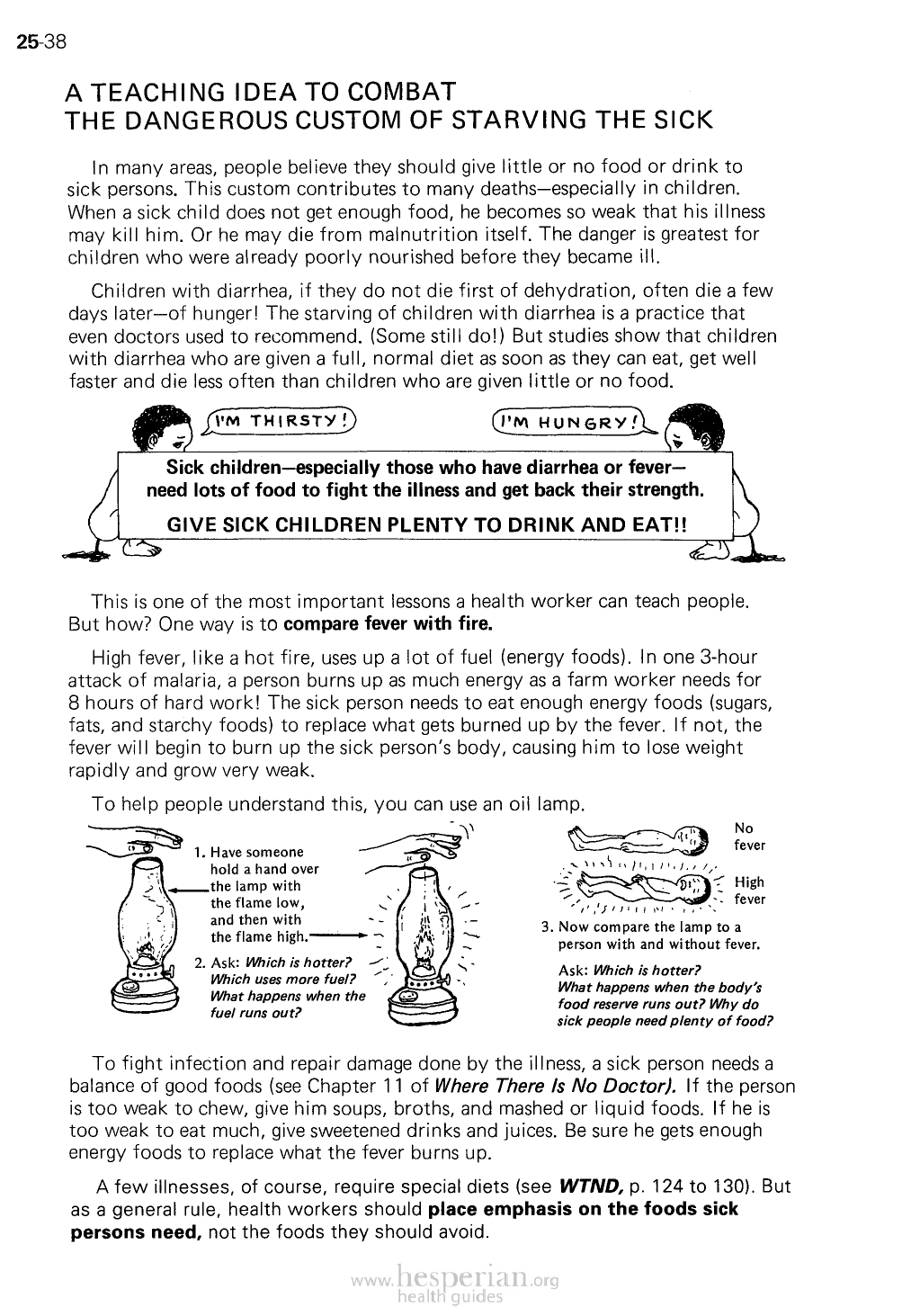
25-38
A TEACHING IDEA TO COMBAT THE
DANGEROUS CUSTOM OF STARVING THE SICK
In many areas, people believe they should give little or no food or drink to sick
persons. This custom contributes to many deaths—especially in children. When a
sick child does not get enough food, he becomes so weak that his illness may kill
him. Or he may die from malnutrition itself. The danger is greatest for children who
were already poorly nourished before they became ill.
Children with diarrhea, if they do not die first of dehydration, often die a few
days later—of hunger! The starving of children with diarrhea is a practice that even
doctors used to recommend. (Some still do!) But studies show that children with
diarrhea who are given a full, normal diet as soon as they can eat, get well faster
and die less often than children who are given little or no food.
Sick children-especially those who have diarrhea or fever-
need lots of food to fight the illness and get back their strength.
GIVE SICK CHILDREN PLENTY TO DRINK AND EAT!!
This is one of the most important lessons a health worker can teach people. But
how? One way is to compare fever with fire.
High fever, like a hot fire, uses up a lot of fuel (energy foods). In one 3-hour attack
of malaria, a person burns up as much energy as a farm worker needs for 8 hours
of hard work! The sick person needs to eat enough energy foods (sugars, fats, and
starchy foods) to replace what gets burned up by the fever. If not, the fever will
begin to burn up the sick person’s body, causing him to lose weight rapidly and
grow very weak.
To help people understand this, you can use an oil lamp.
1. Have someone
hold a hand over
the lamp with
the flame low,
and then with
the flame high.
2. Ask: Which is hotter?
Which uses more fuel?
What happens when the
fuel runs out?
No
fever
High
fever
3. Now compare the lamp to a
person with and without fever.
Ask: Which is hotter? What
happens when the body’s food
reserve runs out? Why do sick
people need plenty of food?
To fight infection and repair damage done by the illness, a sick person needs
a balance of good foods (see Chapter 11 of Where There Is No Doctor). If the
person is too weak to chew, give him soups, broths, and mashed or liquid foods.
If he is too weak to eat much, give sweetened drinks and juices. Be sure he gets
enough energy foods to replace what the fever burns up.
A few illnesses, of course, require special diets (see WTND, p. 124 to 130).
But as a general rule, health workers should place emphasis on the foods sick
persons need, not the foods they should avoid.